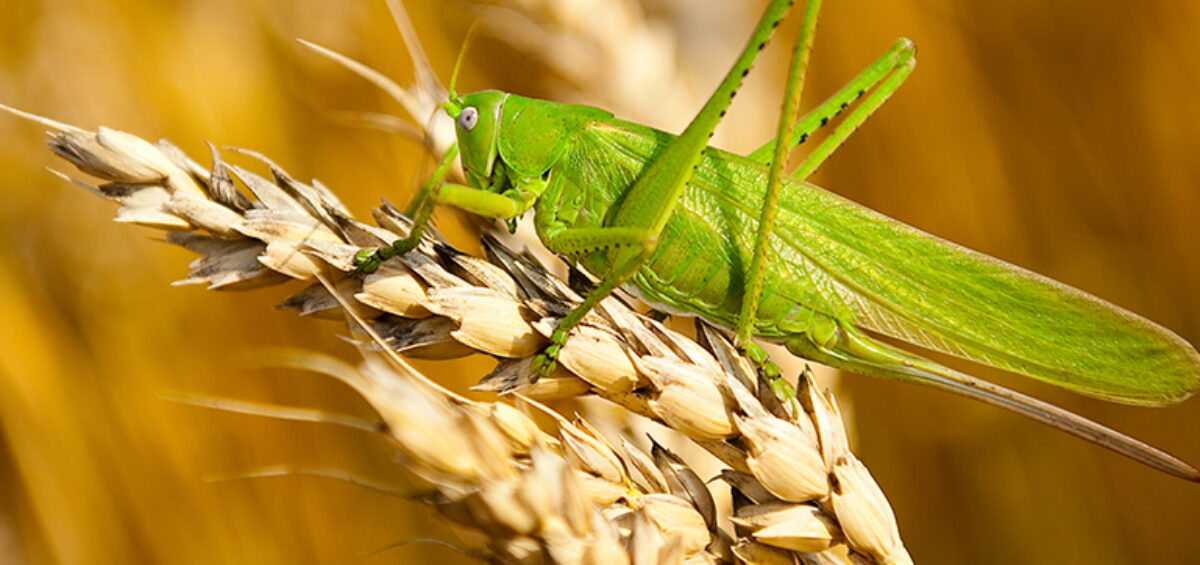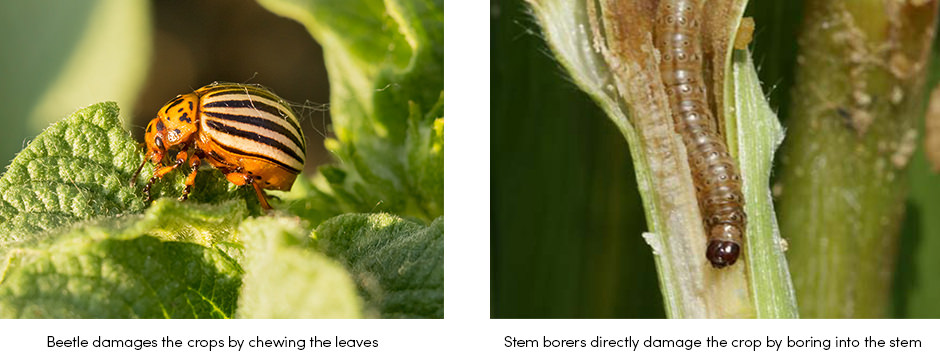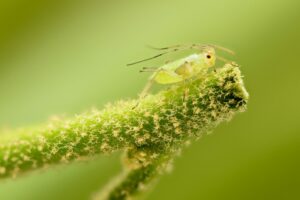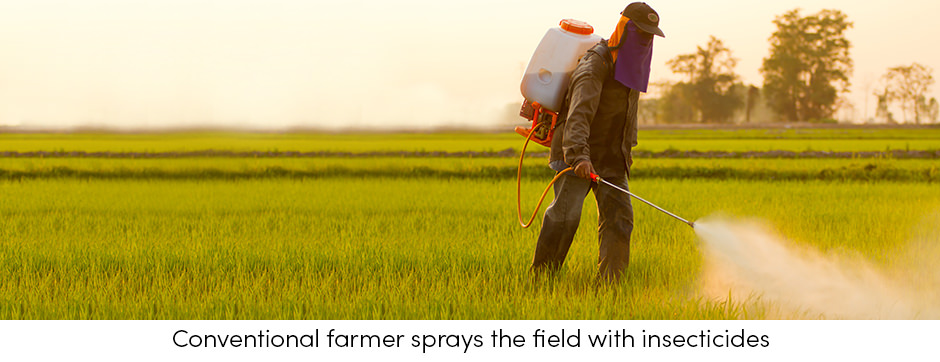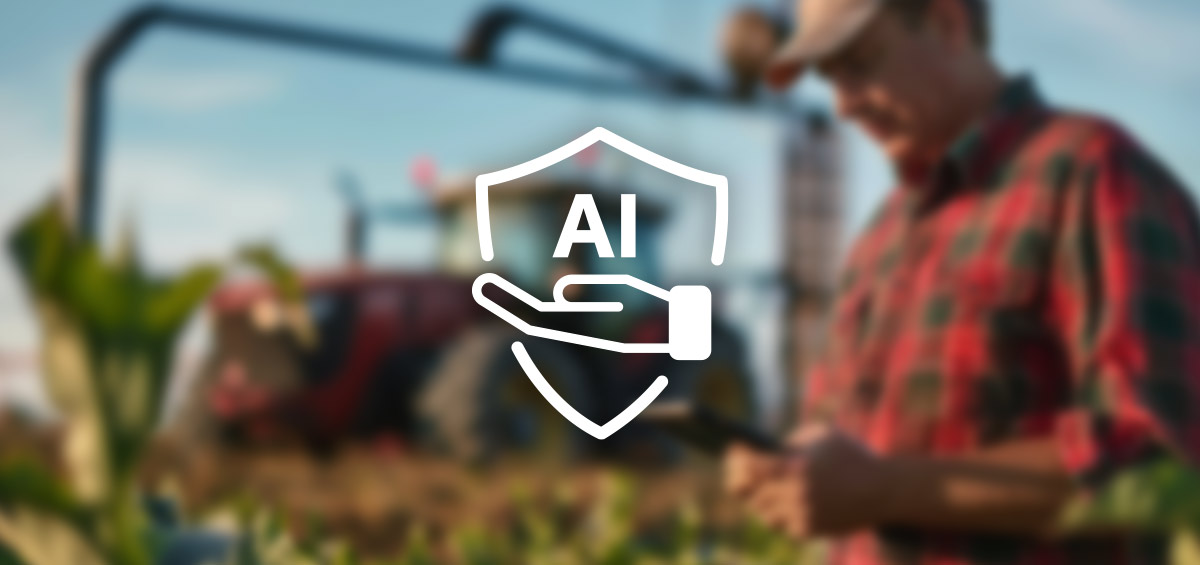During these times, when the world is facing very intense population growth, farmers who are striving to meet the global food demands have become true heroes. Unfortunately, their mission of feeding the world is a demanding battle with unfavorable weather conditions and various pests that work against them.
Insect Pests Damage the Crop Production
Insect pests are a universally recognized threat that widespread throughout the world. The term insect pest applies to any insect that inflicts damage to crops, animals, or humans. Insect pests reduce plant yield potential and severe infestation can even kill plants and destroy the whole crop production. Therefore, insects represent a serious problem in food and fiber crop production.
There are the two kinds of crop damage that may be caused by insect pests:
- Direct injury to the crop caused by insect feeding
- Indirect damage in which insects transmit diseases
The most common way of damaging the crops is through direct injury, caused by feeding on above-ground and below-ground plant parts. This type of direct crop injury is related to the insect’s mouthparts. For example, insects with chewing mouthparts, such as beetles, damage the crop by chewing the leaves or some other plant parts. Moreover, some of them cause damage by boring into the plant tissue, such as stem boring insects or leaf miners.
Outside of damaging the crop by directly feeding on a plant tissue, insects can cause serious crop losses by transmitting the diseases as well. Insect pests that transmit plant diseases are called vectors. They usually transmit viral, bacterial or fungal diseases.
There are the three ways insects transmit disease:
- Accidental or incidental transmission; the disease occurs through feeding or oviposition injury caused by the insect; for example, the Beet Curly Top Virus is caused by Beet Leafhopper feeding
- Passive transmission; the insect transmits the disease from one plant to another; for example: bees can transmit bacterium Erwinia amylovora that causes Apple Fire Blight Disease
- Active transmission; the disease occurs when the insect that carries the pathogen feeds on a plant, and then moves on to a healthy plant and transmits the pathogen.
Aphids are active vectors of crop diseases
How to Protect Crops from Insect Pests?
Generally, it’s estimated that various pests (insects, weeds, nematodes, animals, diseases) each year cause crop yield losses of 20-40%. The exact percentage of yield losses due to insects varies a lot depending on several factors, such as the time of attack and potential crop protection measures.
In some cases, insects can harm the crop production completely and cause significant losses for farmers. Furthermore, the economic impact of insects on crop production is not only measured by the cost of the damage on crops, but also by the resources spent on crop insect protection.
In an attempt to protect their crops from insects, farmers practice various crop protection measures. These include:
Preventive measures:
- Planting resistant varieties
- Adaptation of planting and harvesting time
- Crop rotation
- Various hygiene measures (healthy and quality planting material, infestation of equipment)
Defense measures:
- Biological; various beneficial viruses, fungi, bacteria, and insects as predators (ladybug)
- Cultural; tracking of weather, monitoring of fields and crops
- Physical; collecting insects and their destruction, disinfection of the soil, seed, and seedlings
- Chemical, use of insecticides
The final measure of a farmer’s crop protection practice depends on the type of crop production. Conventional farmers use various pesticides as a most common protection measure.
Integrated farmers combine very restricted use of pesticides with the use of various biological, cultural, and physical measures.
On the other hand, organic farmers rely on completely natural crop protection practices based on preventative, biological, cultural, and physical measures.
Regardless, every farmer is responsible for his own crop insect protection. So, the final question is: How to deal with insect pests? Unfortunately, there is no one answer. However, by practicing good farm management practices such as those aforementioned preventative measures, a farmer can significantly reduce potential risk. Most importantly, track your crops and fields, because nothing compares to on-time reaction.
Text sources: FAO
Image sources: e-Hinga
